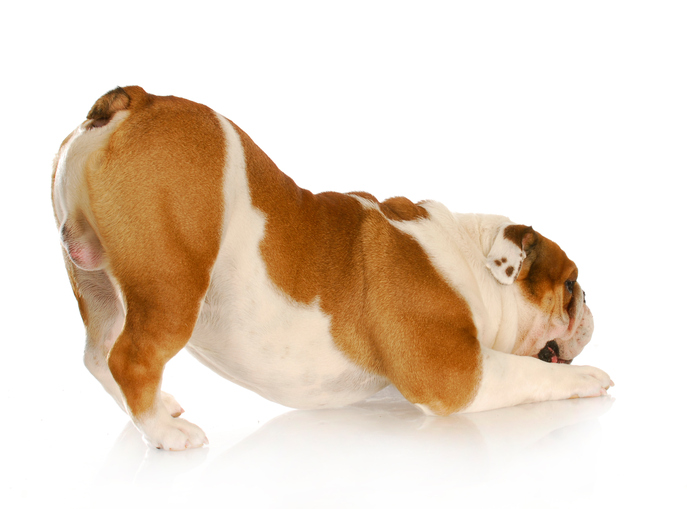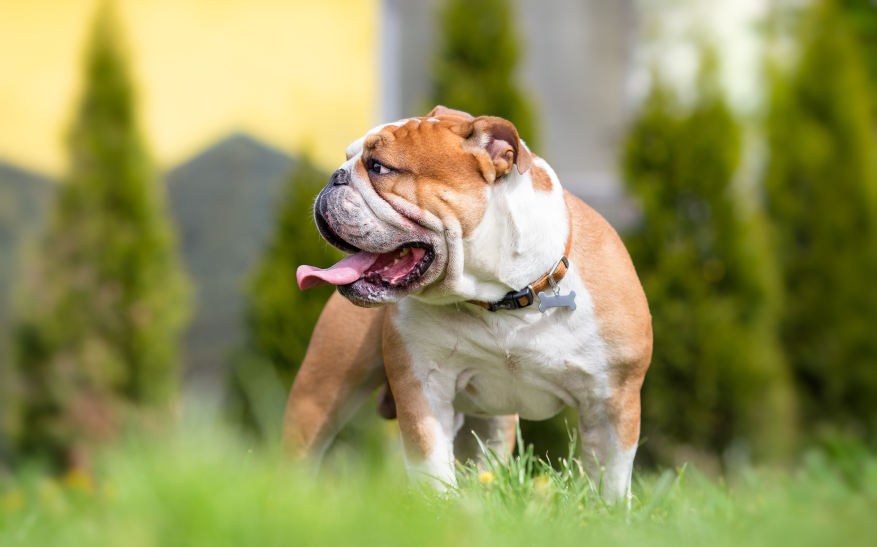Bulldog tail amputation sounds scary and cruel. But the procedure is necessary and even beneficial for some Bulldogs. What is your stance on Bulldog tail amputation?

The procedure involves the surgical removal of the tail. It usually aims to prevent recurrent infection and inflammation in the tail and tail pocket area.
Is Bulldog Tail Amputation Really Necessary?
Tail amputation is not necessary for all Bulldogs. It is a major and delicate surgery, as it involves the removal of the end portion of a dog’s spine – the tail. This procedure also involves putting your Bulldog under anesthesia, which poses a lot of risks. Bulldog tail amputation is only recommended if the pet suffers from recurrent sores and infection in the area despite receiving adequate attention and treatment.
Bulldog Tail Amputation: When To Do It?
Bulldogs have tails of different shapes. There are straight tails, long and wavy tails, and corkscrew tails. The AKC considers straight tails and corkscrew tails ideal for Bulldogs.
However, Bulldogs with corkscrew tails, inverted tails, and deep tail pockets are very prone to elimination difficulties, persistent infection, sores, and inflammation. Bulldogs with such problematic tail structures are required to undergo tail amputation.
Is Bulldog Tail Amputation the Only Solution?
Sores and inflammation can be solved and prevented by cleaning the area using hydrogen peroxide and a cotton ball. Applying antibiotic ointments also offers relief. However, it is important to keep the area dry to prevent further infection. Addressing skin infections, especially if your Bulldog suffers from yeast infection or allergies, can also help.
Sadly, some Bulldog tails and tail pockets remain a problem even with regular and tedious cleaning. This causes prolonged pain and discomfort to affected Bulldogs. For recurrent tail or tail pocket infections, most veterinarians recommend Bulldog tail amputation to relieve the affected Bulldog from pain and daily discomfort.
When to Opt for Bulldog Tail Amputation?
Only have Bulldog tail amputation done if your pet experiences the following.
- Infection in the tail area that just won’t heal.
- He has an inverted tail that grows back into the rear.
- The dog has a very deep tail pocket that is seemingly impossible to clean and dry thoroughly.
Since Bulldog tail amputation is a major procedure, it is important to have it done only when it is necessary. It should never be done for cosmetic purposes. It’s also better to seek the opinion of a Bulldog-specialist veterinarian before opting to have the surgery done.
Bulldog Tail Amputation: The Surgery
Your pet’s body is conditioned and prepared prior the tail amputation. He is put on a drip and undergoes some tests to determine if he is healthy enough to be anesthetized and have a surgery.
Once cleared, your pet is put under anesthesia. Then, the surgeon will check your pet’s tail to determine the point at which it will be cut, mark it, and proceed to amputation.
Bulldog tail amputation usually requires an overnight stay at the pet hospital. It is also often done along with other surgeries, including spaying.
Do not hesitate to seek a second opinion before finally deciding on whether you should have your Bulldog’s tail amputated or not.
Post-Bulldog Tail Amputation Care
Make sure to clean and dry your Bulldog’s surgery wounds. Your Bulldog may also be sent home with the prescription of medications, such as antibiotics, painkillers, and anti-inflammatory meds.
Your pet may also feel a bit sluggish a few days after the surgery. He may also feel the urge to bite his tail area so it is a good idea to put an Elizabethan collar around his neck. His surgery wounds should fully heal in 3 to 4 weeks after the operation.
Bulldog Tail Amputation Cost
The cost of Bulldog tail amputation varies depending on the state and location of the animal hospital you plan to visit. Bulldog specialists may also charge a little higher than usual veterinary surgeons. But it is always advisable to have the operation done by a Bulldog specialist.
A Bulldog tail amputation procedure can cost from $950 to $3,000. The price usually includes the cost of IV fluids, animal hospital admission, veterinary/surgical fee, lab tests, medications, and other related things.

